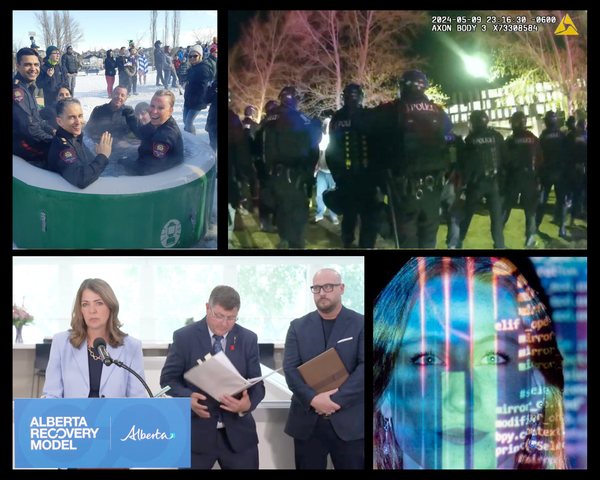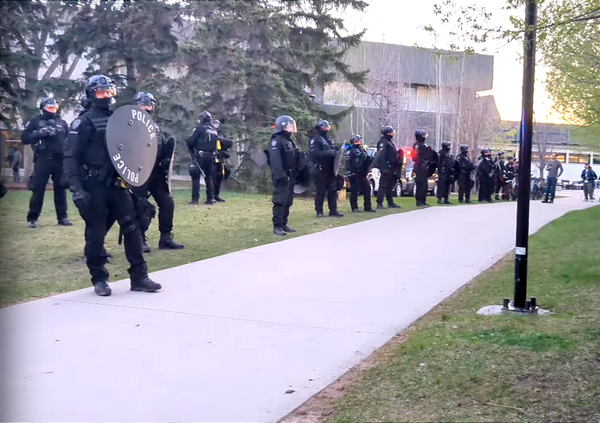'A unique export': Is Alberta recreating the abusive Troubled Teen Industry?
American journalists, researchers and survivors of abuse in youth residential addiction treatment centres describe blood-curdling stories of widespread sexual and physical abuse that hint at a potential outcome of the treatment infrastructure under construction in Alberta.
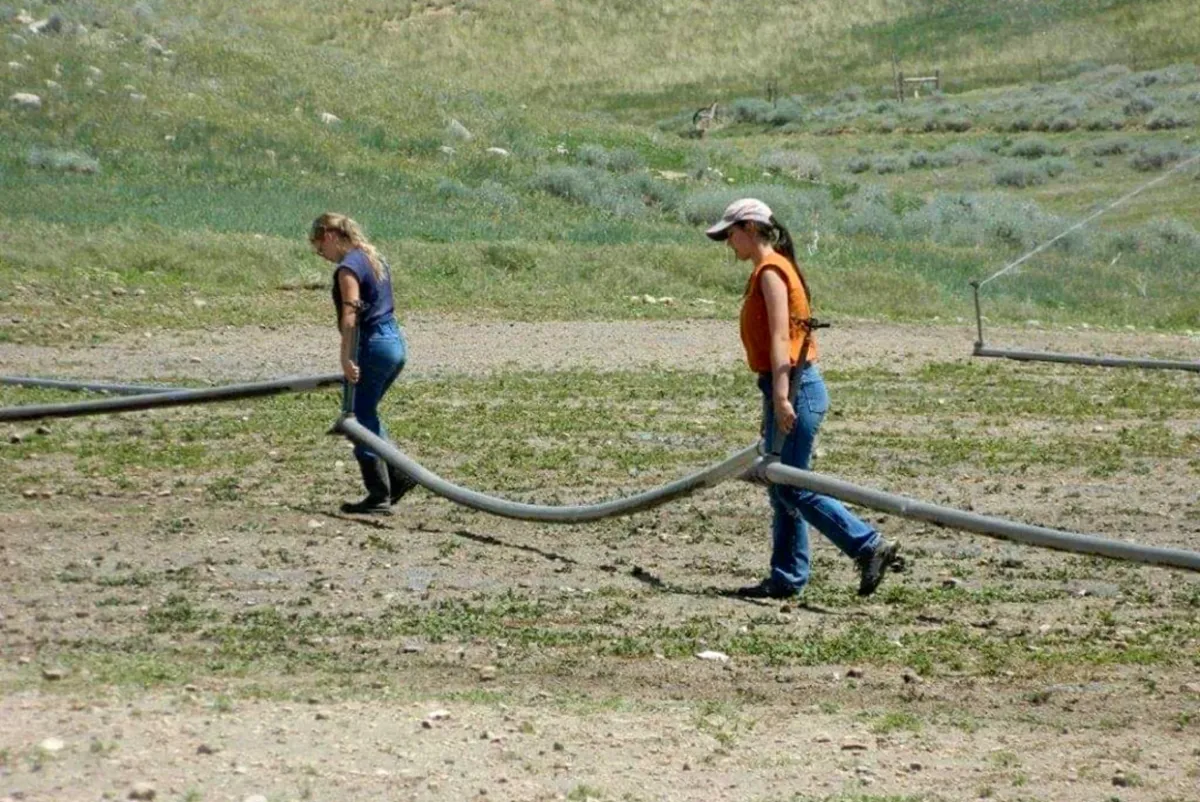
CONTENT WARNING: This article describes violent and sexually abusive acts against people in vulnerable situations.
Alberta's Minister of Mental Health & Addiction, Dan Williams, is traveling in Europe to "engage with international drug policy experts," including operators of an Italian therapeutic community documented in the 2020 Netflix series SanPa: Sins of the Savior. The series explores abuses of people sent to the community for 'treatment' in the 1980s under the leadership of self-proclaimed messiah Vincenzo Muccioli. Muccioli was convicted of kidnapping and mistreatment in 1985 for "having physically chained young people in the community as they went through substance withdrawal." Although he was acquitted in 1990 after appeals, in 1994 Muccioli was imprisoned for aiding and abetting a fatal beating. He died in 1995.
In a recent webinar hosted by the American Bar Association, American journalists, researchers and survivors of abuse in youth residential addiction treatment centres described blood-curdling stories of stolen babies, widespread sexual and physical abuse, forced labour and conversion therapy.
Their stories, which expand on a growing body of testimony from researchers and survivors who include Paris Hilton, hint at a potential outcome of the treatment infrastructure under construction across Alberta.
'Youth programming' makes up a central component of funding allocations in the Ministry of Mental Health and Addiction's $300 million annual budget. Premier Smith's chief of staff, Marshall Smith, has previously advocated for the establishment of 'Recovery High Schools' and other youth-specific programming, as detailed in Drug Data Decoded.
The abuse of youths described at the American Bar Association event echos the dire outcomes of youths held in provincial care in Alberta. In yet another unsettling report, the Office of the Child and Youth Advocate revealed that youths in child intervention services are dying at staggering rates from drug poisoning, suicide and violence. In total, 68 children and youths died while in child intervention services in the most recent year, with an additional 15 incurring serious injuries. The placements of the children and youths at the time of their deaths are provided in only 32 of the 48 cases, with parental care, independent living, kinship and foster care leading these. The remaining 16 were omitted from reporting. (A consolidated review is expected in September, 2024.)
Alberta has long been unique among Canadian provinces in housing the Alberta Adolescent Recovery Centre (AARC), a nonprofit company whose executive director was employed by a facility related to Straight Inc., a defunct abstinence-based youth drug treatment company that maintained facilities across the United States throughout the 1970s and 1980s. (AARC's current executive director was never implicated in any wrongdoing.)
In the 1980s, the Alberta government spent $725,000 CAD in today's dollar sending youths to KIDS, a New Jersey-based Straight Inc. spinoff facility. This arrangement, also unique among Canadian provinces, ended in 1990 when it became apparent that the facility had no psychiatrist. AARC was founded in Alberta that year, after plans to expand KIDS to the province fell through.
A 2007 Jersey Times article described the former Straight Inc. president as having been "repeatedly accused of physically abusing, brainwashing and falsely imprisoning his patients." AARC's current board of directors includes Tyler Shandro, a former member of the Alberta government cabinet that set the current abstinence-oriented model in motion. AARC will be discussed in greater depth in a future Drug Data Decoded article.
Abuse of youths at residential facilities is not limited to the United States. In March 2023, Radio-Canada reported on the sexual abuse of forty people, mostly minors, at the Maison Arc-en-ciel faith-based addiction treatment centre in Hearst, Ontario between the 1950s and 2010. Many of the children were sent there as 'troubled teens,' and in some cases, the only alternative to attending the centre was incarceration.
Sexual assault allegations also extend to adult services. In May 2023, New Westminster Police laid charges of sexual assault against a former contractor who worked and attended 12-Step meetings within the city's recovery community. High-ranking staff at Last Door Recovery Society were alleged to have attempted to silence community members bringing their stories forward.
Last Door casts a long shadow in Alberta, with the My Recovery Plan app licensed to the Alberta government for nearly $1.8-million in sole-source contracts. My Recovery Plan tracks and monitors patient outcomes, but as revealed to Drug Data Decoded by the Alberta government, the app appears to shield the government's recovery-oriented system from public scrutiny.
In Grande Prairie, a former family doctor who had her permit to practice revoked in January 2023 for sexually abusing a patient opened an addiction-specializing wellness clinic just a year later. The clinic will have little oversight by the Alberta government, which continues to refuse the creation of a College of Counselling Therapists to govern addiction counsellors.
Abuse allegations run in both directions. Staff at a prominent residential recovery facility in BC have alleged sexual assault and other violent acts by clients, in one case escalating to the an employee's murder. Staff who have complained have reportedly lost shifts. In 2023, the same facility converted eighteen of its adult treatment beds to beds for youths.
People attending many of these facilities are made to suffer from a lack of oversight and accountability, with unsafe conditions created for both clients and staff. But is regulation enough, or do the extreme power imbalances at all scales of the system corrupt it from the inside?
"At least once a month we hear about a youth who died"
Amanda Simmons, a lawyer who survived abuse at youth residential treatment, described the "lucrative business model for investors at the expense of children" in the so-called Troubled Teen Industry. In the States, people can expect to pay $1900 USD per child per day or around $700,000 per child per year for 'treatment.'
Private equity firms provide significant financial backing to these facilities. The firms have faced criticism for "inadequate counselling or eduction services, physical, sexual and emotional abuse, forced isolation, use of physical and chemical restraints, and squalid living conditions," according to Simmons.
Simmons described how the nomenclature of these businesses is manipulated from 'congregate care' to 'wilderness therapy,' youth camps and religious boarding schools. Some are operated out of Airbnb rentals, rendering them difficult to monitor. Many children and youths are sent from out-of-state by parents or forced into the system by a juvenile conviction.
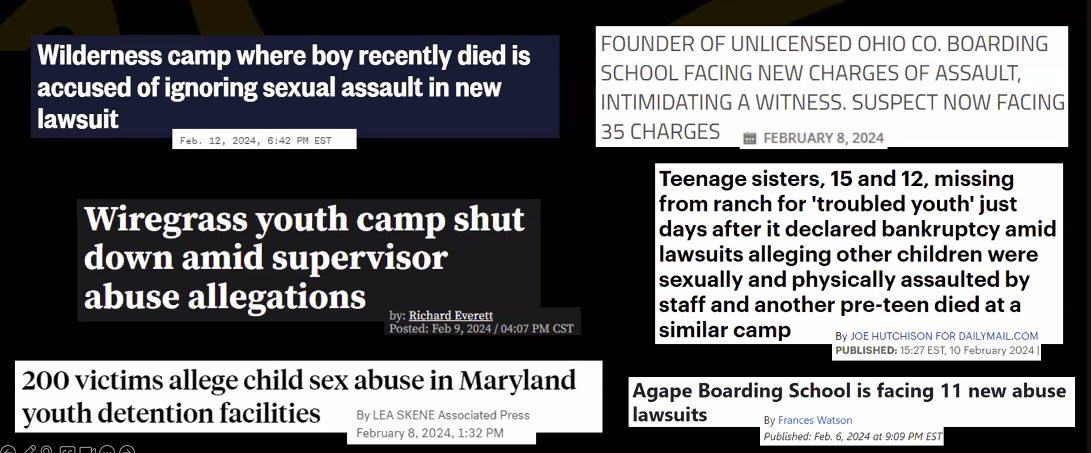
The Kids for Cash scandal revealed the dangerous power the judicial system holds as a tributary of the Troubled Teen Industry, when two judges were convicted of taking $2.8 million for convicting children and feeding them into the pipeline.
Survivor Elisha Nightingale emphasized the interchangeability of juvenile justice and treatment systems. If one system runs out of beds, youths are simply moved into the other system. To Nightingale, this speaks to a tendency toward warehousing: "Let's just put kids here we don't want to look at or deal with."
"More covert conversion therapy"
Simmons detailed juvenile strip searches and widespread sexual abuse at these facilities. The industry preys on children in foster care, BIPOC and LGBTQ+ youth in particular.
Dr. Sarah Golightly, a survivor and researcher at the University of Strathclyde in Glasgow, reported that over half of the 100 survivors of abuse in these facilities who completed questionnaires for her research identified as LGBTQ+. A prevailing view among the youths was that they are susceptible to parental desire to see them 'converted,' but additional reasons for having been sent to these facilities were, relatedly, substance use, suicide attempts, eating disorders and other mental health struggles.
Dr. Golightly reported that "what we're seeing today is more covert conversion therapy... more subtle and consistent undermining of people's sense of self." She found that in some cases, people didn't have adequate language to explain their experiences and so hadn't realized that what they were experiencing was a form of conversion therapy.
Dr. Golightly also suggests increasing demand among parents for conversion therapy of trans and non-binary youths.
She suggests that for youths having endured these abuses, leaving the facility may not always be a point of safety, if they are returning to unsafe homes. But, according to NBC investigative reporter Tyler Kingkade, strictly limiting communication between teens and parents is a common tactic used by these facilities to shield themselves from accountability.
Origin of the Troubled Teen Industry
According to reports Kingkade has compiled, religious boarding homes got their start as early as the 1950s. A pastor named Lester Roloff started the Bethesda homes and, according to NBC News, was accused of selling newborn babies of teen girls from its Mississippi homes in the 1970s and 1980s. Christian families adopting these babies would pay a $250 "love gift" to the homes. This occurred at least 100 times.
While the Mississippi homes closed in the 1980s, the organization's owners and staff moved on to Missouri, Florida and Texas. Their model was to use religious exemptions to set up similar facilities anywhere regulations didn't exist.
One woman's allegations from her time at Trinity Teen Solutions in Wyoming exemplify the extreme escalation of abuses to which child patients are subjected. According to Newsweek's reporting on Kelsie VanMeveren, on arrival at the girls-only ranch, she had a cardboard sign hung around her neck that read "I'm too cool for you." Next, she reported being leashed to a dog for a month, then to a goat. During this two-week episode, she was head-butted, dragged through mud, and rendered generally helpless by the goat.
Finally, after allegedly being tied to other patients and to staff, VanMeveren reported being ordered to hold absolute silence for three months and was confined to a chair in silence for another month.
Trinity Teen Solutions paused operations in 2022. In October 2023, a class-action was undertaken by three named plaintiffs representing over 250 people on claims of forced labour under the Trafficking Victims Protection Act. The lawsuit details the measures taken by some facilities to ensure parents were kept in the dark about their children's treatment.
Other facilities in Indiana, Missouri, Mississippi, Oregon, Ohio and Utah have also been accused of subjecting youths to forced labour.
With religious schools coming under increasing scrutiny, private schools and the Troubled Teen Industry would open new channels for similar abuses.
In 2016, California banned conversion therapy, but the practice persisted through the Troubled Teen Industry because, according to Kingkade, California has essentially no rules around private schools. As Utah's booming troubled teen industry shows, "regulation alone doesn't entirely prevent abuse."
Utah, ground zero of the modern Troubled Teen Industry
Of all states, Utah draws by far the largest revenue in the industry, taking in thousands of teens every year from all over the country. It houses more than 100 facilities, primarily under the banner of wilderness therapy and residential treatment facilities. The Mormon Brigham Young University launched wilderness therapy in the 1960s, taking advantage of Utah's abundant public lands.
Most facilities are not religious boarding schools despite the ubiquity of the Mormon Church in the state, but according to Salt Lake City Tribune journalist Jessica Miller, many leverage the "squeaky clean" image of the Mormon Church for marketing their services. As a state heavy on 'parental rights,' Utah allows parents to enlist their kids in facilities where they can be held against their will until they are 18 and can legally sign themselves out.
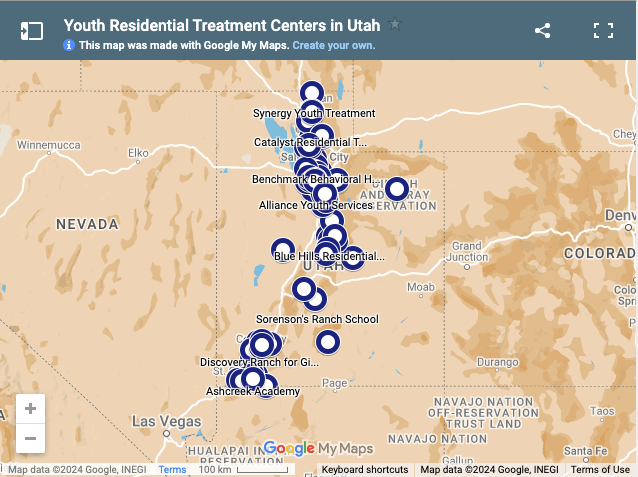
Miller reports that authorities have been reluctant to shut down facilities regardless of the degree of reported abuse. As documented by the University of Utah’s Kem C. Gardner Policy Institute, the sector represents a 'unique export industry' with around 90% of youth clients coming from out-of-state and $22 million in tax revenue generated in 2015. Economies of entire towns are centred around these facilities.
"Wilderness therapy" has increasingly become synonymous with abuse, triggering a pivot to other terminology such as 'outdoor experience centres.' With all the attention on this issue and the ability of survivors to tell their stories through documentaries and media, many wilderness therapy centres have shut down. Insurance companies offering youth treatment as a health benefit are beginning to pull coverage for longer-term centres, but shorter-term (30-day) centres continue to drive revenue from benefits coverage.
Drug Data Decoded has documented the religious nature of publicly funded addiction treatment in Alberta, uncovered the hidden privatization of services and their backing by private equity, and followed alleged abuses in residential treatment revealed by courageous whistleblowers. What's Wrong With Rehab?, a long-form piece published in Alberta Views, contextualized the industry's increasing power in the province against its lack of transparency and accountability.
But the profit motive may run deeper, when we examine the infrastructure being deployed on the public dollar: the United States has built a domestic industry now known for sexual exploitation of youths. With endless fake moral panics around youths being propagated by the Alberta government, it's time people in Alberta demanded answers about real dangers to youths sitting in plain sight.
Drug Data Decoded provides analysis on topics concerning the war on drugs using news sources, publicly available data sets and freedom of information submissions, from which the author draws reasonable opinions. The author is not a journalist.
Have story tips or suggestions?
Send an email!

